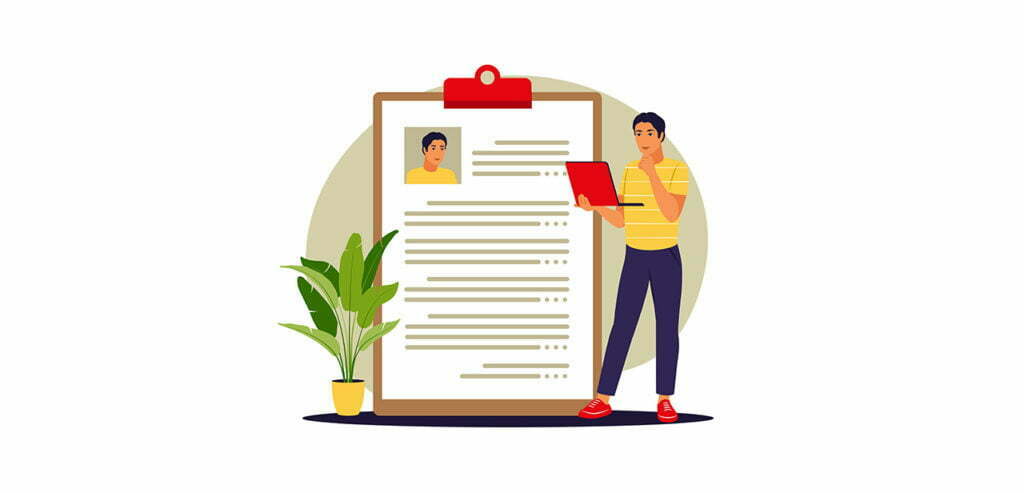Как составить резюме, если у вас мало опыта работы

Составление резюме является важным шагом в процессе поиска работы. Оно помогает работодателям оценить ваш опыт и квалификацию, а также понять, насколько вы подходите для конкретной должности. Однако, если вы только начинаете свою карьеру в IT-сфере, может быть сложно составить резюме, которое будет привлекательным для работодателей.
В этой статье мы рассмотрим, как составить резюме IT-специалиста, если у вас мало опыта работы.
Используйте функциональный формат
Функциональный формат резюме ориентирован на навыки и опыт работы, а не на список должностей и мест работы. Этот формат поможет вам подчеркнуть свои профессиональные навыки и достижения, даже если у вас мало опыта.
Укажите курсы и сертификаты
Если у вас нет много опыта работы, важно упомянуть в резюме авторитетные курсы и сертификаты, которые вы получили. Это может быть онлайн-курс по программированию, сертификат от Amazon Web Services или любой другой профессиональный курс, который вы прошли.
Упомяните, какие новые знания и умения вы приобрели благодаря этим курсам, и как вы их используете в своей работе.
Упомяните проекты
Если у вас есть опыт работы на стажировках или в качестве волонтера, не стесняйтесь упомянуть проекты, над которыми вы работали. Это может быть разработка сайта, создание мобильного приложения или любой другой проект, который демонстрирует ваши навыки и способности.
Укажите, какую роль вы играли в проекте и какие результаты были достигнуты.
Подчеркните свои навыки
Ваше резюме должно подчеркивать ваши профессиональные навыки и умения. Это может быть умение программировать на различных языках, знание баз данных, навыки работы с различными инструментами и технологиями. Укажите, какими навыками вы обладаете и как используете их для решения задач.
Уделяйте внимание форматированию
Форматирование резюме играет важную роль в его эффективности. Используйте простой и легко читаемый шрифт, такой как Arial или Times New Roman. Разбейте резюме на блоки информации с использованием заголовков и подзаголовков.
Убедитесь, что все информация выровнена по левому краю и имеет одинаковый размер шрифта, который не должен быть меньше 10-12 пунктов. Также важно использовать аккуратный дизайн и избегать ярких цветов или сложных украшений.
Не забывайте о краткости
Краткость – сестра таланта. Помните, что ваше резюме должно быть лаконичным и не занимать слишком много места. Старайтесь оставить только самую важную информацию и не углубляться в подробности, которые не имеют отношения к вашей квалификации и опыту работы.
Упомяните свои цели
Не забывайте упомянуть свои карьерные цели и что вы ищете в новой работе. Это поможет работодателям понять, как вы подходите для конкретной должности и какие у вас есть амбиции и мотивации.
Приложите сопроводительное письмо
Уникальное сопроводительное письмо для каждой вакансии может подчеркнуть ваши мотивации и цели, а также дополнить информацию, которая не вошла в резюме. Используйте его, чтобы объяснить, почему вы заинтересованы в конкретной компании и почему вы считаете, что можете быть хорошим кандидатом.
Важно помнить, что каждое резюме должно быть индивидуальным и соответствовать конкретной должности, на которую вы претендуете. Старайтесь адаптировать свои резюме под каждую компанию и вакансию, чтобы максимально подчеркнуть свои навыки и квалификацию.
Получите обратную связь
Перед отправкой резюме работодателю попросите своих друзей, коллег или наставников посмотреть его и дать обратную связь. Они могут предложить свои советы по улучшению резюме, а также помочь найти ошибки и опечатки.
Заключение
Составление резюме может быть сложным процессом, особенно если у вас мало опыта работы. Однако, если вы грамотно используете функциональный формат, упоминаете пройденные курсы и сертификаты, проекты, навыки и цели, а также уделяете внимание форматированию и краткости, вы сможете составить резюме, которое будет привлекательным для работодателей и повысит ваши шансы на трудоустройство.
Список использованных источников:
- «How to Write a Great Resume for an Entry Level Position», The Balance Careers
- «How to Write a Resume for a Job in the Tech Industry», The Muse
- «7 tips to help you get your entry-level IT job», TechRepublic






 , а затем
, а затем
Комментарии